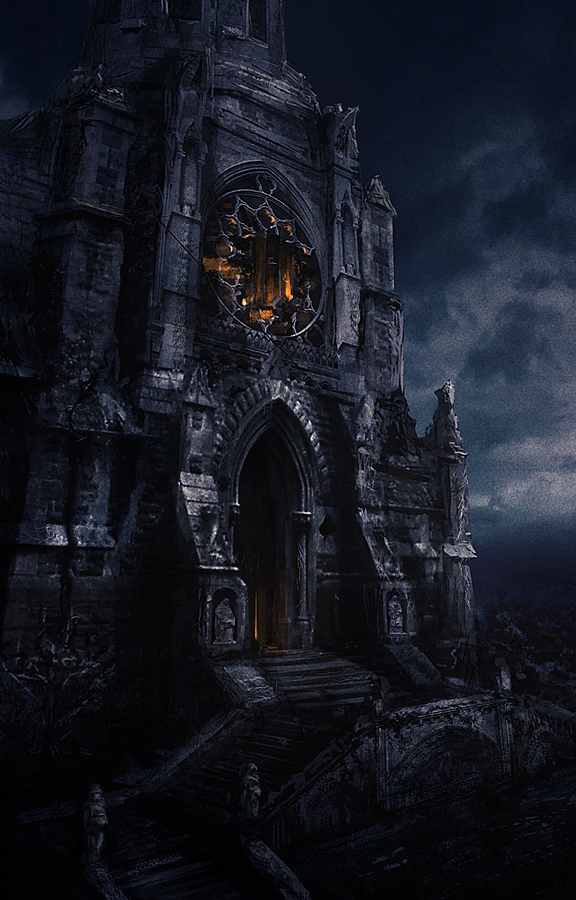AsaelNhanas
Moon
- Joined
- Apr 8, 2014
Alo,
Basically I am looking for someone to Role Play the Sire, Kane, of my Main and so far Only Character Asael.
Characters need to be Suitable ages, 18 and Above please.
Kane is in the Apparent Age of 30 and the True Age of 650.
Asael is the Apparent Age of 21 and the True Age of 350.
Also looking for others to Join in as any particular Character of their choosing.
Either Post here or Message me please.
The Docks
Located on the very Outskirts of The City.
Frequented by All Species.

The Swamp
Located around The Docks.
Frequented by Weres'.

The Cathedral
Located in the Semi-Abandoned North-Western District of The City.
Frequented by Kane, Asael, and Others that Kane Invites within.

The City
Populated by Witches, Weres', Shifters, Vampires, Dhampirs, Humans, Vampire Slayers, Were Slayers, Witch Hunters, Dhampir Slayers, Shifter Hunters and Gifted Humans.

LOCATIONS IN THE CITY:
South Side District: Red Light Club
Frequented by Vampires, Dhampirs, Shifters, Witches, Gifted Humans, Regular Humans, Slayers and Hunters of all Kinds.

West Side District: Weapons Shop
Frequented by Hunters and Slayers of all Kinds.

East Side District: Doctors Office and Lab
Frequented by Witches, Gifted Humans, Humans, Vampires, Weres', Slayers and Hunters of all Kinds.

North-Eastern Side District: Blood Bank
Frequented by Humans, Gifted Humans, Vampires Dhampirs, and Vampire Slayers.

South-Eastern District: Back Alleyway
Frequented by Dhampirs and Shifters.

Western District: Police Station
Frequented by Dhampirs, Shifters, Slayers and Hunters of all Kinds.

Basically I am looking for someone to Role Play the Sire, Kane, of my Main and so far Only Character Asael.
Characters need to be Suitable ages, 18 and Above please.
Kane is in the Apparent Age of 30 and the True Age of 650.
Asael is the Apparent Age of 21 and the True Age of 350.
Also looking for others to Join in as any particular Character of their choosing.
Either Post here or Message me please.
The Docks
Located on the very Outskirts of The City.
Frequented by All Species.

The Swamp
Located around The Docks.
Frequented by Weres'.

The Cathedral
Located in the Semi-Abandoned North-Western District of The City.
Frequented by Kane, Asael, and Others that Kane Invites within.

The City
Populated by Witches, Weres', Shifters, Vampires, Dhampirs, Humans, Vampire Slayers, Were Slayers, Witch Hunters, Dhampir Slayers, Shifter Hunters and Gifted Humans.

LOCATIONS IN THE CITY:
South Side District: Red Light Club
Frequented by Vampires, Dhampirs, Shifters, Witches, Gifted Humans, Regular Humans, Slayers and Hunters of all Kinds.

West Side District: Weapons Shop
Frequented by Hunters and Slayers of all Kinds.

East Side District: Doctors Office and Lab
Frequented by Witches, Gifted Humans, Humans, Vampires, Weres', Slayers and Hunters of all Kinds.

North-Eastern Side District: Blood Bank
Frequented by Humans, Gifted Humans, Vampires Dhampirs, and Vampire Slayers.

South-Eastern District: Back Alleyway
Frequented by Dhampirs and Shifters.

Western District: Police Station
Frequented by Dhampirs, Shifters, Slayers and Hunters of all Kinds.



 Your support makes Blue Moon possible (Patreon)
Your support makes Blue Moon possible (Patreon)